
The Commonwealth Aircraft Corporation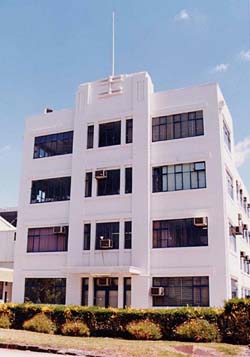 In 1936, the Victorian Government purchased 140 acres for the establishment of the Commonwealth Aircraft Corporation (CAC) with a factory in Lorimer Street and an airstrip extending from where the AMRL main gate now stands. The CAC built 1683 aircraft from this Lorimer Street factory and flew them out from this airstrip, the fourth to be built in the Fishermen's Bend area. http://www.dsto.defence.gov.au
http://members.nbci.com/_XMCM/artattack/cac/cac_aircraft.htm The Commonwealth Aircraft Corporation is the best known of the Australian aircraft manufacturers of the Word War II era and post war era. The aircraft began as a private corporation founded by Lawrence Wackett who had been a Captain with the Australian Flying Corps and known for his engineering ingenuity. After World War I, Wackett had begun manufacturing and designing Civil Aircraft. In the 30's CAC took up the license for the North American NA-16, or the Texan or Harvard as it was known. This was to become the CAC Wirraway, which served Australia in training and combat including a kill over a Zero when a 4 Sqn RAAF Wirraway shot down a Zero over New Guinea. CAC designed the training aircraft the Wackett and then the stop gap fighter, the Boomerang which was the only indiginously designed and built aircraft to see combat in WWII. The factory having a good working relationship with North American also produced the Mustang in later years. Other Australian manufacturers such as DAP, GAF and De Havilland Australia built aircraft in Australia for the RAAF. The best known of these is DAP who produced the Beaufighters which became known as "Whispering Death" to the Japanese. DAP also produced the Beaufort, and many more licensed aircraft. DAP was to become GAF which manufactured the Lincoln post war that saw service with 1 Sqn in Malaya. GAF was later to produce the first Australian manned jet, the Pika, the jet target tug Jindivik which is still in export and the Nomad. De Havilland Australia produced the huge amounts of Tiger Moths that were used for training in Australia as well as the Mosquito for Pacific service. During the war CAC produced two interesting prototypes which unfortunately never made it into production. The Woomera which was a three seater medium bomber that had remotely operated turrets in the rear engine nacelles. The second was the interceptor, the CA-15 or Kangaroo. A 721 km/h fast fighter with a range of 4000 km's. After the war CAC produced the CAC Sabre, one of the ultimate Sabres of the type. With a more powerful Avon turbojet and twin 30mm cannons the frame was 60% redesigned. For more information on the Military Aircraft of Australia the AusAviation website has available many titles which cover the aircraft mentioned here.
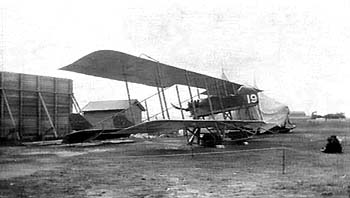 Maurice Farman MF11 'Shorthorn' at Fishermen's Bend (undated) State Library of Victoria. Library Record Number: 803282 note library caption states this is a Vickers 'Gun Bus' at Fishermen's Bend (undated)
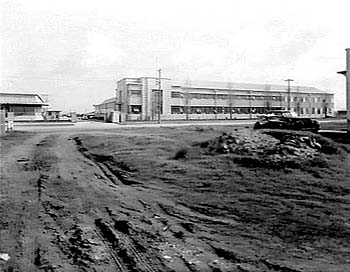 Department of Aircraft Production (DAP) Headquarters, Fishermen's Bend, 1935 Photograph by Lyle Fowler, 1891-1969 State Library of Victoria. Library Record Number: 910855
CAC Early construction, June 20, 1937 you may wish to download a 1000 pixel version Photo courtesy Tony Lyons
CAC Near completion, August 9, 1939 you may wish to download a 1000 pixel version Photo courtesy Tony Lyons
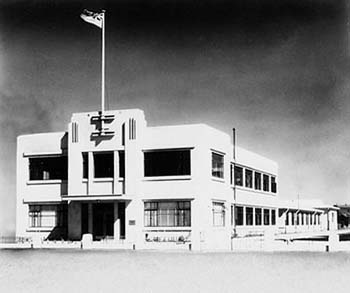 CAC Main Office Building, 1939 Photo courtesy Tony Lyons
CAC Aerial view you may wish to download a 1000 pixel version Photo courtesy Tony Lyons
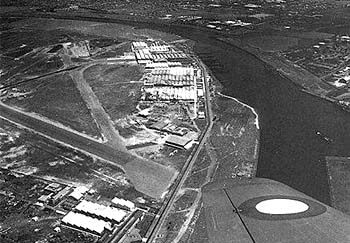 CAC Aerial view Photo source tba CAC Main workshop area you may wish to download a 1000 pixel version Photo courtesy Tony Lyons
CAC Drawing Office you may wish to download a 1000 pixel version Photo courtesy Tony Lyons
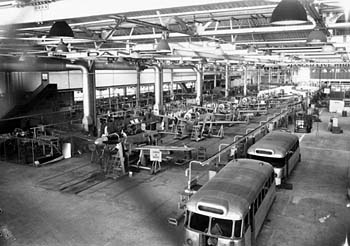 Mustang construction line, CAC, date also available as a 1000 pixel image Photo courtesy Tony Lyons
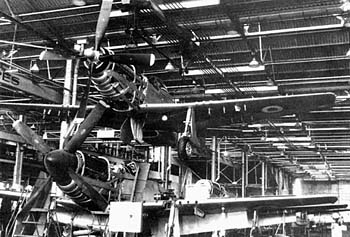 Mustang construction line, CAC, date also available as a 1000 pixel image Photo courtesy Tony Lyons
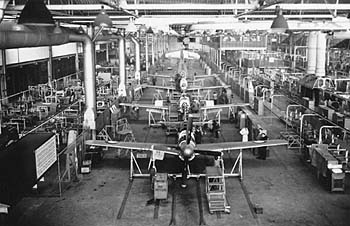 Mustang construction line, CAC, date also available as a 1000 pixel image Photo courtesy Tony Lyons
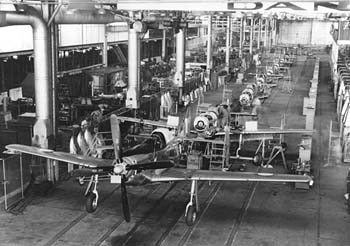 Mustang construction line, CAC, date also available as a 1000 pixel image Photo courtesy Tony Lyons
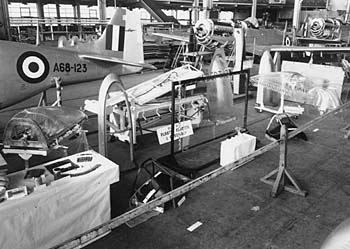 Mustang construction line, 'Open Day', CAC, date also available as a 1000 pixel image Photo courtesy Tony Lyons
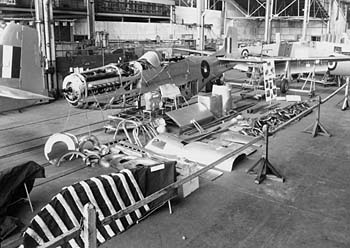 Mustang construction line, 'Open Day', CAC, date also available as a 1000 pixel image Photo courtesy Tony Lyons
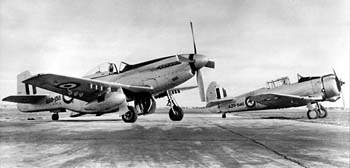 Mustang and Wirraway, CAC, date also available as a 1000 pixel image Photo courtesy Tony Lyons
http://www.kepl.com.au/MAAC/Wackett.html The Commonwealth Aircraft Corporation was formed in 1936, sponsored by BHP, Broken Hill Associated Smelters and General Motors-Holden, with Wackett as the senior engineer. He toured many countries searching for suitable aircraft to built under licence, finally choosing the North American NA-33. It had superior performance to anything in Australia or Britain, and the governments of both the USA and Australia supported the idea. The RAAF named the new fighter Wirraway, an aboriginal term for "challenge." The first engine, a US type built under licence, was completed in January 1939, and a complete aircraft was flown on March 27 of the same year. Thirty Wirraways had been delivered by the outbreak of war later that year.
Excerpt from Research Guide Immigration to Australia 1901-39 Chapter 8; Vocational Immigration Summary Immigrants were very often assisted between 1901 and 1939 in order to satisfy particular labour market needs. While unskilled urban workers were rarely encouraged, farm labourers and domestic servants were greatly sought after and therefore assisted. The majority came from England. Specific entry
A461, N349/1/6 Prime Minister's Department, 'Immigration Artisans. Commonwealth Aircraft Corporation' [23 pages, 1938]
"In January 1938, the Managing Director of General Motors-Holden Ltd wrote to the Prime Minister on behalf of the Commonwealth Aircraft Corporation, pointing out that the aircraft industry was handicapped owing to the lack of skilled tradesmen. He suggested that the assisted passage scheme, the resumption of which was then under consideration, might be utilised to overcome the shortage and, if the operatives were unavailable in Great Britain, Northern Europe might be tried. The Corporation guaranteed 8-12 months' employment although this was considered insufficient to induce skilled men to emigrate with their families. In view of the importance of the aircraft industry to Australia's defence, assisted passages were granted to selected artisans from the United Kingdom; however, since the men were manual labourers coming to Australia under contract, it was necessary that the terms of engagement were acceptable to the Minister for the Interior in accordance with the Contract Immigrants' Act. The Minister required the Corporation to guarantee employment for at least three years at not less than award rates."
http://www.austehc.unimelb.edu.au/tia/499.html We [...] now to return to the mid-thirties to the next independent commercial enterprise in Australian aviation. It was the formation of the Commonwealth Aircraft Corporation (CAC) on 17 October 1936.[14] It arose from the initiative of Essington Lewis, who was at the time the Chief General Manager of BHP, and who formed a syndicate of BHP, Broken Hill Associated Smelters and G.M.H. to undertake a study leading to the establishment of military aircraft and engine manufacturing facilities in Australia. These companies were later joined by I.C.I., Electrolytic Zinc and Orient Steam Navigation Company. The nucleus of the newly formed company was provided by L. J. Wackett's team, operating at the Tugan Aircraft premises in Sydney. This company was taken over by CAC and Wackett became its first manager. A factory was constructed at Fishermen's Bend in Melbourne and Wackett began to operate from the new premises in September, 1937. In order to enable rapid local production, a licenced design was adopted, both for the airframe (the North American NA33, later known as the Wirraway), and for the engine (Pratt and Whitney Wasp).[15] Whilst this is a historical review, in these days of rampant Canberra bureaucracy it is interesting to note the speed with which it was possible to operate when there were no government departments set up to 'assist' industry. Thus the first order was received in January 1937, some nine months before the factory was completed (this took less than a year) and the first aircraft and its engine were completed in March 1939, some 18 months after the factory started operating.[16] A total of 755 Wirraways were built in subsequent war years. In 1938 a requirement for an intermediary trainer for the R.A.A.F. arose and the Wackett team designed and built the Wackett trainer, which first flew in October 1939. It was subsequently re-engined and some 200 production trainers were built, with deliveries occurring between May 1941 and April 1942.[17] An interesting and innovative CAC design was the Woomera three seater reconnaissance bomber. Engineering work on this aircraft commenced in April 1940 and the first flight took place in September 1941. The Woomera had a number of ingenious features incorporated, the most interesting being the remotely controlled, power-operated gun turrets at the rear of each engine nacelle. Due to a change of government policy, this type was not ordered into production.[18] In order to counteract the supremacy of the Japanese Air Force in 1942, the CAC design staff employed the most powerful engine then available, the 1200 h.p. twin Wasp to power a new design of a small fighter. To save time, many existing Wirraway components were incorporated in the new design. The new aircraft, named the Boomerang, first flew at the end of May 1942, precisely 14 weeks after rough drafts had been approved. 105 aircraft of this type were ordered off the drawing board and first production aircraft were delivered to the R.A.A.F. by September 1942. Further versions of the Boomerang had supercharged engines and a total of 250 aircraft of both types were built.[19] The design of an advanced fighter (known as the CA15) commenced in July 1942 (Fig. 26).
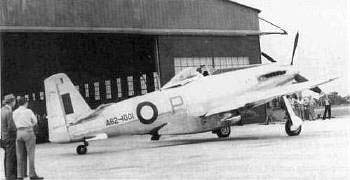 Fig. 26: CA-15 fighter aircraft, 1946 photo courtesy Hawker de Havilland, Victoria
An interesting and professional design was the Winjeel trainer (Fig. 27) for the R.A.A.F. which first flew in February 1951. The delivery of 62 production Winjeels took place between August 1955 and August 1957.[21] Some of these aircraft are still used by the R.A.A.F. as forward air controller aircraft. 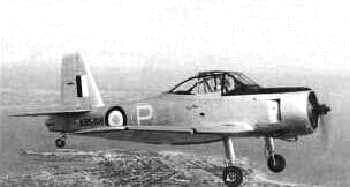 Fig. 27: Winjeel, training aircraft photo courtesy Hawker de Havilland, Victoria
Whilst the North American F-86 Sabre was next built under licence by CAC, the Australian version of this aircraft was powered by a licence-built Avon engine of higher thrust and bigger air flow. This necessitated a substantial local redesign of the fuselage. The prototype Avon-Sabre flew in August 1953 and production deliveries took place between August 1954 and December 1961. A total of 111 production aircraft were built.[22] An interesting innovation was the Ceres (Fig. 28), the first specifically designed crop-dusting aircraft in Australia. It made extensive usage of Wirraway parts and first flew in February 1958. Some 21 aircraft of this type were produced.[23] 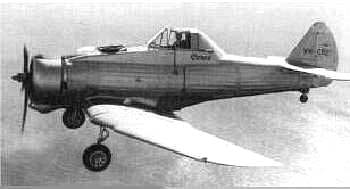 Fig. 28: Ceres Crop Duster photo courtesy Hawker de Havilland, Victoria
There were several other CAC designs which never reached prototype stage. The next development in which CAC participated was the joint development of a new trainer for the R.A.A.F. in 1980 - and this is reviewed under the heading of the Australian Aircraft Consortium. We have to go back to 1939 again, to look at the third major Australian initiative in aviation. The spectre of the coming war caused the Commonwealth Government to think about setting up additional facilities specifically for the production of war planes. The Department of Aircraft Production was established and its production branch, known as the Beaufort Division, was set up at Fishermen's Bend, next to CAC. The Beaufort Division, under the control of John (later Sir John) Storey, one of the most prominent industrialists of that time, commenced operations in September, 1939 with an empty office and in May 1941 produced its first licence-built Beaufort bomber.[24] The innovations needed to put this aircraft into, and maintain in production, consisted of the replacement of the unobtainable British engine, the Taurus, with the locally produced twin-row Wasp engines. Local sources of supply had to be arranged for many sub-components which were originally to be imported. By August 1944 when its production ceased, 700 aircraft of this type had been delivered. Towards the end of 1943, the licensed production of the fighter-bomber, the Beaufighter was put in hand and the first deliveries of the latter type commenced in May 1944.[25] In 1944, studies began for the licensed manufacture of the Lancaster heavy bomber. This aircraft was rapidly improved into the Lincoln version and this was the version adopted for Australia. The first Lincoln flew in March 1946. The most remarkable feature of the wartime history of the Australian aircraft industry was its impressive growth. From a handful of people in 1937 and without a developed base of sub-contractors, it grew to 5,000 in June 1940 and to a peak of some 44,000 people in 1944 operating in four main factories and several annexes. Sub-contractors accounted for another 10,000 people. This industry delivered some 3,500 aircraft of all types to the R.A.A.F. and, at the end of the war, was capable of designing and manufacturing aircraft equal to the best in the world.[26] Even the licence-built aircraft were improvements on their originals: for instance the Beaufighter was more heavily armed than its British forebear and the Avon Sabre faster and more heavily armed than the original F-86. After the war, the Beaufort Division, renamed the Government Aircraft Factories, undertook, in 1948, at the behest of the Commonwealth Advisory Aeronautical Research Council, the design and development of a pilotless target aircraft to be used in guided weapons trials at Woomera. This aircraft, called the Jindivik, first flew in 1952 and became the longest lived product of the Australian aircraft industry.[27] It is still in production in 1986 and over 500 Jindiviks of various versions have been produced; it has been exported to Britain, United States and Sweden. In 1953, a part of the design team at Government Aircraft Factories turned to guided weapons and began the development of a heavy anti-tank weapon, the Malkara. This device became the standard anti-tank weapon of the Royal Armoured Corps in Britain and over 1,000 Malkaras were exported to the United Kingdom.[28] In 1960, the Government Aircraft Factories guided weapons design team was moved to the Aeronautical Research Laboratories (see below) to undertake the design and development of the Ikara anti-submarine weapon. The Ikara story is included in the Aeronautical Research Laboratories review. It is important to appreciate the significance of these three remotely piloted aircraft/guided weapon programmes. Within the life of one project, Australian designers reached world state-of-the-art level and secured exports of high technology products. It is also noteworthy that the cost of local development was less than half of overseas development of equivalent projects.[29] The last independent Government Aircraft Factories development was the Nomad utility aircraft. Its design started in 1969 and the first Nomad flew in 1971. Some 170 N22 and N24 Nomads were produced and, in addition to its use by the Australian Army and the Royal Flying Doctor Service, this aircraft was presented as military aid to Indonesia, the Philippines and Papua New Guinea and was exported to several countries, including the United States of America. The Nomad is a short take-off and landing aircraft, which utilises an ingenious system of spoiler-ailerons and full span flaps.[30] The Nomad (Fig. 29) fitted with a 360 degree search radar, was also developed in the Searchmaster version for use in coastal surveillance missions. Nomad production ceased in 1982.
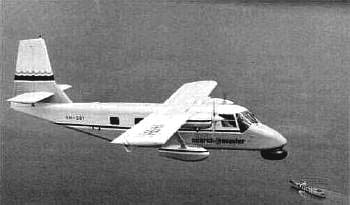 Fig. 29: Nomad 'Searchmaster' photo courtesy Aerospace Technologies of Australia
In reviewing the contributions of various organisations to Aviation in Australia, it is important to mention the Aeronautical Research Laboratories. These Laboratories were formed in the fertile immediate pre-war years and, like their two contemporaries, Commonwealth Aircraft Corporation and Government Aircraft Factories, were situated at Fishermen's Bend in Melbourne. They were organised by a young British aeronautical scientist, Laurie Coombs, who became its first Chief Superintendent and remained as such until the mid-sixties. The Aeronautical Research Laboratories' 9'x7' wind tunnel was used by the adjoining aircraft firms to test their new designs. In the fifties, Aeronautical Research Laboratories became one of the leading centres in the world involved in studying aircraft fatigue problems. In 1960, Aeronautical Research Laboratories was given the task of leading a combined team of scientists and engineers from Aeronautical Research Laboratories, Government Aircraft Factories and Weapons Research Establishment on project Ikara, a guided anti-submarine weapon. Ikara became one of the most, if not the most, accurate anti-submarine weapon in the world and, in addition to equipping nine Royal Australian Navy ships, it was sold to Britain (six ships) and Brazil (three ships).[31] Outside the 'big three' (Hawker de Havilland, Commonwealth Aircraft Corporation and Government Aircraft Factories), two other developments in Australian aircraft industry must be mentioned. The first is the Airtourer, a two-seater club aircraft, which was a private design of three then Government Aircraft Factories employees, led by Henry Millicer, and which won a British Royal Aero Club Design Competition in 1952. The first aircraft was built in wood by a group of enthusiasts and the prototype flew in 1959. The project and the prototype were sold to the Victa Company in Sydney and the aircraft was re-designed by Henry Millicer and his team in metal. The metal prototype flew in 1961 and a series production started which lasted until 1966 and 168 Airtourers were built in Australia. Due to the relatively small scale production, and hence unavoidable high unit costs; small internal markets and the inability to compete with the general aviation aircraft produced in quantity by the American industry, the production of this aircraft was suspended in 1966.[32] The whole project was sold to Aero Engine Services Limited in New Zealand, where a further 84 were made. Henry Millicer further developed the basic design into the Aircruiser, which first flew in July 1966. This project was also sold to New Zealand, where, after the re-design of the cockpit, it became the CT4 Airtrainer and was sold to the RAAF, RNZAF, Royal Thai Air Force and the Singapore Air Force. Some 100 CT4s were built and most of them are still in service.[33] The second private industrial initiative in aviation was the formation of the Transavia Division of Transfield Industries and the design and development of the PL-12 Airtruk/Skyfarmer series of agricultural/utility aircraft. It was designed by Luigi Pellarini, first flew in April 1965 and was type-certificated in February 1966 for fertiliser spreading and seed sowing. A liquid spraying conversion flew in April 1966 and deliveries of production versions started in December 1966. Over 140 Airtruks have been sold in Australia, New Zealand, Denmark, Malaysia, South Africa, Taiwan, Thailand and Yugoslavia. Other developments of this type of aircraft are the PL-12U (utility version), the more powerful Skyfarmer T-300 and T-300A and a military version PL-12 M300. A turboprop version, PL-12-550T has been proposed.[34] The export success of the Airtruk is a good example of how a specialised product, made cost effectively without government interference, can secure overseas markets in a competitive climate. In 1979 the RAAF issued a requirement for a new Basic Trainer aircraft and the three major aircraft companies, Hawker de Havilland, Commonwealth Aircraft Corporation and Government Aircraft Factories, formed in 1981, a jointly owned company, the Australian Aircraft Consortium, to manage the programme and to design and develop this aircraft called the A-10 (Fig. 30).
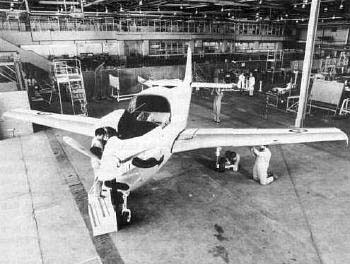 Fig. 30: A-10 prototype training aircraft photo courtesy Hawker de Havilland Holdings Ltd.
The specification was very demanding and, for the first time in Australia, the aircraft was to be designed to full military specifications. Due to various problems, among which the most important were the interface problems between the Service Project Management and the Australian Aircraft Consortium and the lack of experience of local designers in designing to military specifications, the project milestones fell back and the costs increased. In December, 1985, when the A-10 prototype had just emerged from final assembly, the government cancelled the local programme and decided to order a Swiss aircraft, the Pilatus PC09. One of the results of this decision was to cripple the local aeronautical design capabilities for the following decade.[35] 14. Anon. Company History, Commonwealth Aircraft Corporation, November, 1943, p. 1. 15. _____, p. 5. 16. _____, p. 6. 17. Anon. Commonwealth Aircraft Corporation Information Sheets, Sheet 3.1. 18. _____, Sheet 4.1. 19. _____, Sheet 5.1. 20. _____, Sheet 6.1. 21. _____, Sheet 9.1. 22. _____, Sheet 10.1. 23. _____, Sheet 12.1. 24. Anon. Australia's Aircraft Industry. Department of Aircraft Production, February, 1946, p. 27. 25. Anon. Government Aircraft Factories, 1939-1954, Department of Defence Production, undated, p. 7. 26. Schaetzel, S. S. Post-War Aeronautical Design and Development in Australia, Sir Charles Kingsford-Smith Memorial Lecture, R.Ae.S. Sydney, October, 1986, p. 6. 27. _____, p. 11. 28. _____, p. 12. 29. Schaetzel, S. S. Local Aeronautical Design in Australia, I. E. Australia Symposium on Aircraft Industry, Melbourne, February, 1970, p. 11. 30. Schaetzel, S. S. Post-War Aeronautical Design and Development in Australia, Sir Charles Kingsford-Smith Memorial Lecture, R.Ae.S. Sydney, October, 1986, p. 13. 31. _____, p. 15 32. _____, p. 19. 33. _____, p. 19. 34. Taylor, J. W. R. Editor, Jane's All The World's Aircraft, 1984/85, London, pp. 8-9. 35. Schaetzel, S. S. Post-War Aeronautical Design and Development in Australia, Sir Charles Kingsford-Smith Memorial Lecture, R.Ae.S. Sydney, October, 1986, p. 22.
Additional images The following images are initially posted no particular order with date, location and citation details tba. These are still being researched with the help of ex Mustang, Meteor, Sabre and Vampire pilot Keith Meggs, Tony Lyons and others (Ed.)  CAC logo, long item courtesy Anthony (Tony) Lyons
 CAC logo, short item courtesy Anthony (Tony) Lyons
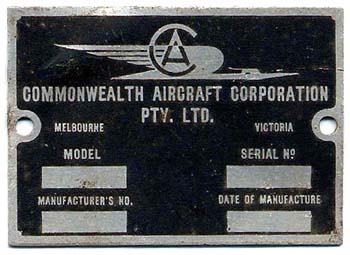 CAC Manufacurers Plate, aluminium also available as a 1000 pixel image item courtesy Keith Meggs
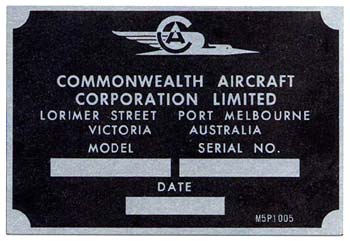 CAC Manufacurers Plate, aluminium also available as a 1000 pixel image item courtesy Keith Meggs
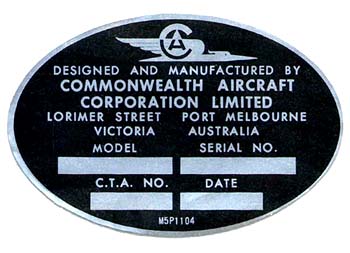 CAC Manufacurers Plate, adhesive transfer also available as a 1000 pixel image item courtesy Keith Meggs
Documents at this posting (Feb, 2001) not in chronological order
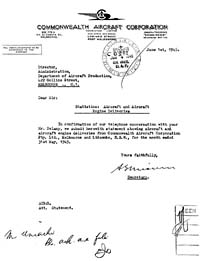
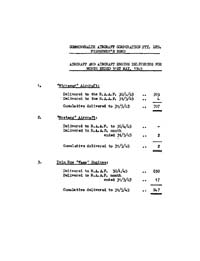 Productivity Report Click on images to download readable 600 pixel copies Items courtesy Anthony (Tony) Lyons
Costings report re Merlin Engine production Click on images to download readable 600 pixel copies Items courtesy Anthony (Tony) Lyons
Flight Test Report re CA-27 Avon Sabre Click on images to download readable 600 pixel copies Items courtesy Anthony (Tony) Lyons
Produced when Australia was facing a rapidly encroaching Japanese Empire and the situation where supplies from the UK and the USA were being cut off. CAC created the Boomerang from ready made patterns of the Wirraway in the incredibly short time 13 weeks. As the allies in the pacific consolidated the South pacific area, supply shortages werent as string as the Boomerang was used as an Army reconn aircraft. The aircraft had superb manouvrability but lacked performance at altitude and was missing in speed. The original airframe of the Boomerang was not suitable for development and when Japan surrendered most were scrapped. The Boomerang is the only Australian designed and produced aircraft to serve in combat.
http://users.interact.net.au/~pwia/boomer.htm
http://www.aviationmuseum.com.au/aircraft/canberra.htm
The CA-28 Ceres was developed from the CAC Wirraway advanced trainer, which in turn was developed from the North American NA-16 trainer. So the Ceres could be considered the "farmer" cousin of the Texan! The model is simpler to build than a Wirraway, due to the flat centre-section (no need to model the curved sections for the wheel wells) and fixed landing gear. http://community.webshots.com/album/25320662JxLCUHlXkP
http://users.interact.net.au/~pwia/jindivik.htm
One of the most outstanding aircraft of the single prop engined monoplane interceptors, being the last of the genre to be prototyped. The aircraft was capable of 721 km/h and had a range of 4,075 km's. Powered by a 2,035 hp Rolls Royce Griffen the aircraft was unfortunately overtaken by the Jet Age and never got past the prototype stage.
http://www.airbornemagazine.com.au/artCA15.htm For more information about the Kangaroo (incl. scale plans), visit Derek Buckmaster's Design Bureau website Macchi
http://www.chariot.net.au/~theburfs/macchiMAIN.html
http://www.chariot.net.au/~theburfs/mirageMAIN.html
http://www.chariot.net.au/~theburfs/mustangMAIN.html
http://users.interact.net.au/~pwia/nomad.htm
The RAAF's first Jet fighter was the De Havilland Australia produced version of the Vampire, the second was the Gloster Meteor whcih was ordered for the RAAF during the Korean War due to a desperate need to replace the Mustangs the RAAF was oeprating there. The Meteor was outclassed by the Mig15 in combat and Australia licensed the Sabre to produce domestically as the front line fighter of the RAAF. CAC added the more powerful Avon Jet to the aircraft and 2x30mm cannon as a result of the combat experience the USAAF in Korea had with the need for more powerful guns than the 50 cal's. The fuselage was lightened, widened, shortened and the intake was redesigned with a greater diameter, requiring 60% of the airframe to be redesigned. Too late for Korean service with the RAAF, the Sabre served with RAAF until 1965 when the remaining aircraft were sold to Indonesia and Malaysia.
http://home.att.net/~jbaugher1/p86_23.html
The Wackett trainer is a relatively obscure Australian designed intermediate trainer. Its obscurity is not deserved, as it is one of the most significant Australian aircraft - earning the distinction of the largest production run of any indigenous Australian design. The Wackett was developed just prior to the Second World War to meet an RAAF requirement for an intermediate trainer to follow on from the Tiger Moths then in use. For more information about the Wackett (incl. scale plans), visit Derek Buckmaster's Design Bureau website
http://community.webshots.com/album/25641488KIBjFVeDiw
L.J.Wackett http://www.chariot.net.au/~theburfs/ljwackett.html Winjeel (CA-25) http://members.nbci.com/_XMCM/artattack/cac/cac_aircraft.htm Aboriginal for "Young Eagle", the Winjeel was designed to replace the Tiger Moth and Wirraway in training duties. the aircraft proved impossible to get into a spin due to its extremely stable design and the aircraft tail surfaces had to be redesigned to make the aircraft more unstable. Designed in 1948, the Winjeel served with the RAAF until 1994.
http://www.hotkey.net.au/~ue626/doc/winjeel_doc.htm
Aboriginal for "Challenge", the Wirraway was the companies first aircraft and based upon the NA-16. The Wirrway served in combat with the RAAF in the dark days of 1941 and 1942. Including when 8 Wirraways took on 100 Japanese aircraft over Rabaul, and another occasion when a 4 Sqn Wirraway shot down a Zero. Served in large numbers as communications and training aircraft.
http://users.interact.net.au/~pwia/wirraway.htm
Designed and protoyped to satisfy the RAAF requirement for a medium bomber capable of dive bombing. The RAAF ordered 105 of the aircraft but these were cancelled when cheaper imports such as the B25 started arriving from the US. The Woomera included the unusual design of having remotely operated gun turrets in the engine nacelles. http://www.dropbears.com/av/KFXart/articles/woomera.htm
De Havilland Vampire - Nene Engine http://www.aviationmuseum.com.au/aircraft/vampire.htm also...
CAC and GAF Aircraft in Australia
WarBirds RAAF
http://www.toowoomba.com/Business/Domandra/boomerang.html It was small, aerobatic and Australian. With its rugged construction and proven agility at low altitudes, it achieved its fame during World War 2 with the Army support squadrons, particularly in the Pacific Islands. It was the Commonwealth Aircraft Corporation CAC Boomerang. Featuring spectacular in flight sequences, The Boomerang Story chronicles the development of the aircraft from the start of World War 2 through its use during the war. Alan Bolton, one of the original designers, recalls the events which saw the Boomerang, the only fighter aircraft designed and made in Australia, come off the production line in an astonishing five months from when approval to design was given. Two hundred and fifty Boomerangs were eventually produced and Greg Board gives a graphic account of his experiences as a test pilot in many of them. The programme also captures the restoration and rebuilds which are currently being undertaken and includes footage of the only Boomerang so far to reappear in Australian skies. The visually graphic Boomerang Story is informative and comprehensive and is a must for the aviation enthusiast or for those interested in Australian Wartime history. The Boomerang Story : A full documentary on the famous Australian World War 2 Fighter Plane. This 48 minute video is available in PAL/NTSC or SECAM format. AUS $ 19.95 includes Postage & Packing within Australia. AUS$ 26.00 includes Postage & Packing for Overseas. (please indicate PAL-NTSC-SECAM). Trade enquiries welcome eMail : domandra@hotkey.net.au
Further Reading Hill, Brian L., Wirraway to Hornet : a history of the Commonwealth Aircraft Corporation Pty Ltd, 1936 to 1985; Bulleen, Vic. : Southern Cross Publications, 1998 CAC Australia - 25 years of construction in the aircraft industry, Commonwealth Aircraft Corporation Pty Ltd. : The Corporation, 1962. Commonwealth Aircraft Corporation Pty Ltd.; Commonwealth Aircraft Corporation Pty., Ltd., Port Melbourne
|
© Copyright 1999-2007 CTIE - All Rights Reserved - Caution |